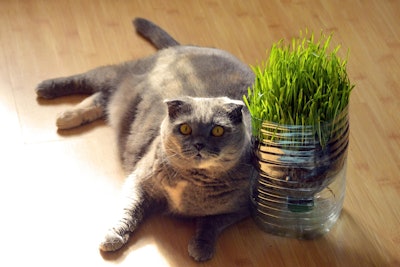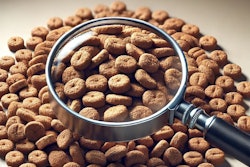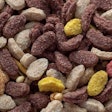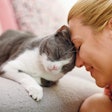
Obesity and overweight in dogs and cats have risen steadily for several years, especially in developed markets like the U.S. In fact, the news has been rather bleak. Yet recent data and advances in research and tools may offer signs that the tide is turning — something to celebrate during World Pet Obesity Week, taking place now (October 6-12, 2025).
For starters, the “2024 Pet Obesity and Nutrition Opinion Survey” from the Association for Pet Obesity Prevention (APOP) showed better awareness among U.S. pet owners of their pets’ body condition scores (BCS), plus more trying to help their pets lose weight. APOP also now offers a suite of tools, including calorie counters, to pet owners, along with a separate set for veterinarians.
Meanwhile, recent studies have delved into sources of body fat for pets, plus improved ways for manufacturers to count and report the amounts of calories in their foods. Let’s break if all down.
Survey says: More owners recognizing overweight and obesity
According to APOP’s latest survey — note that the 2025 survey is open now — 55% of cat owners and 51% of dog owners categorized their pets’ body conditions as ideal. That represented an improvement over the 2023 figures of 57% and 66%, respectively, because that change meant more owners are aware that their pets may be overweight or obese.
To wit: The survey, comprising 322 U.S. pet owners and 134 veterinary professionals, also showed 33% of cat owners and 35% of dog owners categorizing their pets as overweight or obese, up from 28% and 17%, respectively, in 2023. (Note that the survey also included 144 international respondents, but for “consistency and statistical reliability,” the report focused on the U.S. pet owner responses, APOP said.)
In addition, 53% of cat owners and 62% of dog owners reported they had attempted to help their pets lose weight, with 25% and 16%, respectively, saying that had tried therapeutic weight-loss diets for their pets. With all the hype, and growing usage, of weight-loss drugs among people, it’s not surprising that about a third of these pet owners are open to the same type of intervention for their pets; 36% of cat owners and 34% of dog owners said they would “consider using a prescription weight-loss drug if it were proven safe, effective and affordable,” though nearly equal percentages said they weren’t sure.
The survey results weren’t all positive, indicating an ongoing need for information and education. For example, BCS awareness remains low: 40% of cat owners and 45% of dog owners reported being familiar with the method, yet only 19% and 27%, respectively, recalled their veterinarians providing a BCS of their pets. More than half of both groups said they had not received one (55% of cat owners, 56% of dog owners).
The survey also indicated that, while trust in veterinarians remains high, vets themselves aren’t always comfortable discussing a pet’s weight with its owner, and their terminology when they do discuss it varies widely, which may cause confusion among owners. Together, these findings “highlight a communication gap, particularly among cat owners, which may reflect less frequent veterinary visits or a lack of formal discussion during routine exams,” APOP said.
Finally, helpful tools for pet owners and veterinarians
Though calorie statements have been required on pet food labels in the U.S. for several years, that doesn’t mean pet owners can use or understand them. So, I find it heartening to see APOP’s new offerings, particularly a calorie counter to estimate how much to feed a dog or cat. Each counter includes helpful instructions on what information to find on a pet food label and how to enter it into the counter/tracker; as an option, you can add the specific food, too.
The suite of tools also includes a weight-range estimator for each species, to determine the healthy weight for a pet; plus, for dogs, there’s a dog walking calorie estimator to estimate how many calories your dog burns on a walk. (Presumably, not enough owners walk their cats — or the cats won’t cooperate with interested owners — to make a cat walking calorie estimator worthwhile!)
APOP has not forgotten vets in providing useful tools. The suite for veterinary professionals includes a step-weight loss calculator, daily energy needs calculator (calculating both resting energy requirement, or RER, and maintenance energy requirement, or MER, which is the RER times activity range) and pet obesity prevalence survey (for vet professionals only, separate from the survey that includes pet owners).
New research for pet food manufacturers
For the pet food industry, new studies are helping provide more insights into possible causes for pet overweight and obesity, as well as flaws in — and corrections for — calculating calories in pet foods. For instance, a meta-analysis of 16 studies on dietary carbohydrates in commercial cat foods, published earlier this year, showed dietary fat, rather than carbohydrates, was linked to increases in body mass fat.
That’s just one study published in recent years on the topic; that research joins a growing body looking at how calories in pet foods are calculated and reported on labels. The traditional method used for some time now, the Modified Atwater equation, “produces discrepancies when compared to the actual calorie content of pet foods as determined through feeding studies,” wrote Kathy Gross, Ph.D., PAS, Dipl ACAN, an adjunct professor at Kansas State University and former worldwide director of R&D for Hill’s Pet Nutrition.
“These discrepancies are not consistent for all pet foods, and accuracy varies depending on the type and quality,” she continued. “For highly digestible pet foods, it may underestimate the metabolizable energy (ME).” The discrepancies, especially underestimating caloric content, can contribute to excess weight, as even small differences can add up over time. Characterizing these as “hidden calories” and “silent contributors to pet obesity,” Gross said the problem can also cause nutritional imbalances. Interestingly, a similar problem exists with caloric content calculations for human foods, she added.
Meaningful progress
These advances certainly don’t mean that the problem of overweight and obese pets is solved; much work still needs to happen in all areas, including research, pet food formulations, and pet owner and veterinary awareness and education. But I can’t help feeling optimistic at the progress and signs that maybe, finally, we are reaching a point of being able to meaningfully address pet obesity.


















